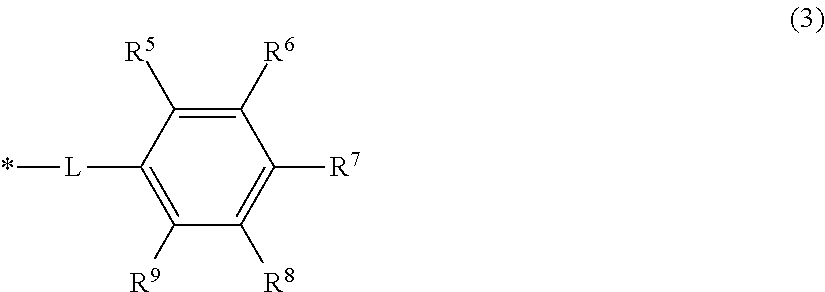Toner and toner manufacturing method
a manufacturing method and technology of toner, applied in the field of toner, can solve the problems of not achieving the desired level of tinting strength, further improvements in tinting strength were not obtained, and adequate tinting strength was not achieved using the pigment derivative by itself, and achieve excellent tinting strength and transferability
- Summary
- Abstract
- Description
- Claims
- Application Information
AI Technical Summary
Benefits of technology
Problems solved by technology
Method used
Image
Examples
examples
[0195]The present invention is explained in detail below using examples, but the invention is not limited to these examples. Unless otherwise specified, “parts” (hereunder sometimes called a “pts”) and “%” values in the text are all based on mass.
Pigment Manufacturing Example
[0196]A pigment was manufactured according to the methods described in Japanese Patent No. 4484171.
Manufacturing Example of Organic Dye 1 Having Basic Segments
[0197]91.4 parts of 98% sulfuric acid, 36.7 parts of 25% fuming sulfuric acid, 6.3 parts of diethylamine and 2.8 parts of 92% paraformaldehyde were loaded at 40° C. into a reaction container equipped with a stirring blade, condenser, a thermometer and a nitrogen introduction tube. This was stirred for 30 minutes at 40° C., after which 8.0 parts of copper phthalocyanine were slowly added. After addition, the reaction solution was warmed, and a reaction was performed for 5 hours at 80° C. After completion of the reaction, the reaction solution was cooled to ...
PUM
| Property | Measurement | Unit |
|---|---|---|
| acid value | aaaaa | aaaaa |
| acid value | aaaaa | aaaaa |
| pKa | aaaaa | aaaaa |
Abstract
Description
Claims
Application Information
 Login to View More
Login to View More - R&D
- Intellectual Property
- Life Sciences
- Materials
- Tech Scout
- Unparalleled Data Quality
- Higher Quality Content
- 60% Fewer Hallucinations
Browse by: Latest US Patents, China's latest patents, Technical Efficacy Thesaurus, Application Domain, Technology Topic, Popular Technical Reports.
© 2025 PatSnap. All rights reserved.Legal|Privacy policy|Modern Slavery Act Transparency Statement|Sitemap|About US| Contact US: help@patsnap.com



